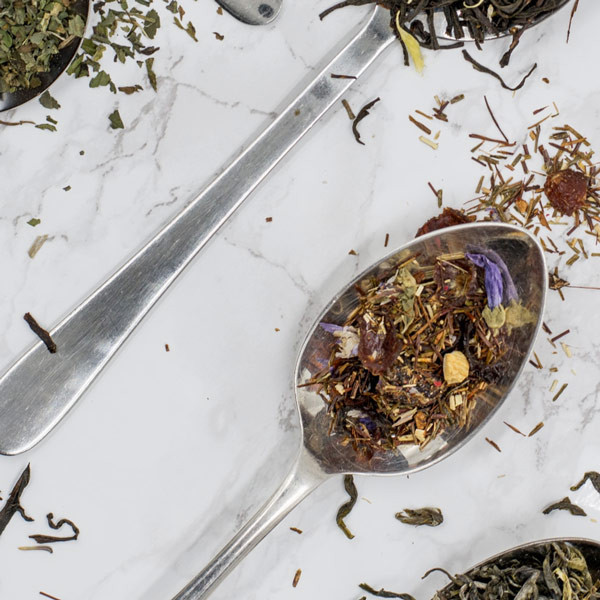If our guide to the Mediterranean Diet left you curious about transitioning to this way of eating, read on for a breakdown of how to do it, specific foods to eat, and the most cost-effective way to make the switch.

So how do you begin to transition?
You may have looked at the previous blog and compared the food intake to your own diet and felt overwhelmed by all the changes you’d need to make. Like all dietary change the key is consistency; take small steps and make small changes to get used to the routine before you change anything else. There is no best way to begin, so from the following strategies pick one to trial first and once you’ve mastered it move onto another food group. If you are already including many of the foods and the practices involved in this diet then you may move faster through each of these changes.
Food Swaps
Here’s a look at the non-negotiable swaps essential to following the Mediterranean Diet:
- Swap all cooking oil for extra virgin olive oil
- Swap all full fat dairy for low-fat
- Swap out salt for herbs and spices
- Make sauces from scratch

Other important swaps:
- Swap your refined carbohydrates to wholegrains: This includes bread, cereal, rice, pasta and all other grains. If your family has a limited wholegrain intake it is beneficial to include them rather than exclude them due to associated impacts on gut health, bowel regularity, insulin sensitivity and satiety.
- Bread: If you or your family are picky with bread, I suggest a standard soft wholemeal or high fibre white bread, but this is not a true wholegrain and the addition of cut-grains and seeds is the absolute goal. The cost often dictates the quality as the seeds, grains and texture of the breads are better since the seeds and grains are pre-softened. The other option is going for a heavy spelt or rye fermented sourdough or sprouted bread that has additional benefits equivocal to wholegrain breads. Make sure to try a range of breads and rotate them, as this helps to keep you interested and enjoying this food.
- Brown/black rice and wholemeal/legume pasta: These versions have a higher fibre content, are chewier and require a little more cooking to make them palatable. They have a nutty flavour and are different in texture compared to the white refined alternatives. Try them with a flavoursome sauce your family already enjoys to help with the transition.
- Cereals and oats: If your family eats breakfast cereals the transition from such options like rice bubbles, cornflakes and cheerios can be a challenge, particularly when swapping to those higher in bran or wholegrains. Cereals that contain a mixture of grains, fruits and nuts are a better choice. Muesli and oats are also a good addition; choose un-toasted with small amounts of fruit, seeds, and nuts. If your family loves oats, but only the quick instant kind, they may find the switch to traditional or steelcut oats a challenge at first. Try storing in a little honey for sweetness or top with their favourite yogurt to help them make the switch. Once you’re only offering this option they will soon learn to love them.
- Grains (quinoa, freekeh, noodles, pearl cous cous) - The Mediterranean style of eating does allow some refined carbohydrates but only a maximum of 3 serves week. This is very different to the typical western diet. Experiment with the wholegrains listed above to increase diversity and prevent food fatigue. The best way to include them is to mix them in with the grains your family already enjoys (such as rice) as a 50:50 split.

Include more nuts and fruits
The primary snacks in the Mediterranean are nuts and fruit, olives and some cheese. Replacing processed snacks with these whole foods allows you to feel fuller for longer, reducing the urge to reach for something naughty when the munchies hit.
Swapping your meat intake
The aim of the Mediterranean diet is to decrease your red meat consumption to 0-1 times a week, poultry < 2 times a week and fish > 2 twice a week. Try the below strategies to help reduce your meat intake;
- Red meat: If your family loves red meat you can gradually work on the frequency by alternating red meat meals with meals focused on legumes and wholegrains. You can also have set days in the week that are allocated to a ‘red meat meal’ where you can all enjoy your favourite dish. Ideally, your goal is to decrease red meat consumption to once a week, so this is a good starting point.
- Poultry: depending on your current dietary patterns, you will either have to increase or decrease the amount of poultry you consume. Chicken can be a great substitute for many red meats and minced meals, and you can use it to help decrease your red meat consumption.
- Legumes: Legumes are a great substitute for mince since they have a similar consistency and can absorb flavours well. Try a spaghetti bolognaise with lentils in place of mince, a slow cooked meal with chickpeas, or a Mexican dish with red kidney beans.
- Increasing fish consumption: This may be the most difficult to increase due to cost and availability. If your budget only allows for tinned fish, such as sardines, mackeral, tuna and salmon, you will still be getting valuable nutrients. If you can, include a white fish or salmon meal once a week as a way to replace other meat proteins.

Increasing vegetables
You should be eating almost a kilo of vegetables per day when following the Mediterranean diet. This may be quite a large increase in your current dietary patterns and can cause a shift in bowel habits, tolerance and meals. You should try to aim for at least 2 serves at both lunch and dinner maybe even in breakfast some days. Soups, stir-fry’s and salads are the easiest way to include a large quantity and variety of vegetables in your diet.
How can I find these foods in a cost-effective manner?
The Mediterranean diet is based on the food available to the people living in the Mediterranean, so the access and cost of this diet has been questioned for its applicability in Australia. But when we take into account seasonal produce, access to fresh food and appropriate portions, it is a cost effective and sustainable diet.
Shopping at local grocers and buying in bulk is a great way to help reduce the costs of ingredients and support local businesses. And eating foods in the recommended portions is another easy way to keep costs in-check.
Let’s look at an approximate cost comparison for one of the most popular mediterranean style meals, a pasta dish:
Basic bolognese
4 serves
- 3 tbl of canola oil $0.15
- 500g of lean beef mince $8.50
- 250g Spaghetti: $1.30
- 1 Jar of Tomato Pasta sauce: $3.50
- 100g Cheddar Cheese: $1.60
Total cost: $15.05
Mediterranean pasta
4 serves
- 3 tbl extra virgin olive oil $0.70
- 1 onion $0.45
- 1 clove of garlic $0.25
- 400g tin 4 bean mix: $2.25
- 250g wholemeal pasta: $5.85
- 1x 400g tin of diced tomato: $2.50
- Approximate cost of 4 herbs for flavour: Dried < $1 or fresh $3
Total cost: $12.00
As you can see the majority of the cost of a basic bolognese is in the cheese, meat, and sauce while the classic Mediterranean pasta dish incorporates lower-cost ingredients.
Snacking
Snacking doesn’t have to break the bank either, with traditional Mediterranean snacks of fresh fruit and nuts approximately $1 per serve, depending on your brand preference.
- 30g serve of nuts: equates to approximately $1/serve
- Wholegrain Bars: these equate to approximately $3/bar
- Fresh Fruit: Prices will vary depending on the season; at present banana’s are 60c each, apples are $0.60-1.20 each, peaches are $0.70 and oranges are $1.00. To allow for budgeting it can be an option to include frozen and/or tinned fruit to achieve a stable cost.
Tracking your progress
A good way to keep track of how you are doing is to make up a table of the major food groups and tick off your servings throughout the day. Your table can look something like this.
|
Food group |
Amount eaten |
Target |
|
Vegetables: 1 serve is ½ a cup |
|
7/day |
|
Fruit: one serve is a tennis ball size or ½ cup of berries |
|
3/day |
|
Low fat dairy: 1 cup of milk, 200g yoghurt or 30g of cheese |
|
2-3/day |
|
Wholegrains: 1 serve is ½ a cup |
|
4/day |
|
Legumes: 1 serve is ½ cup |
|
1-2/day |
|
Olives, nuts and seeds: 1 serve is 2 Tblsp |
|
1-2/day |
|
Meats : 1 serve of fish is 100g, poultry is 85g, red meat is 65g |
Fish: |
>2/week |
|
Poultry and eggs: |
1-2/week |
|
|
Red meat |
<1/week |
Once you start to transition to this dietary pattern you will notice more money in the bank, improved bowel habits and immunity, and depending on your age, lifestyle, and activity patterns, you may even notice shifts in body fat particularly around your waist.
The Mediterranean Diet is the best for overall health and longevity, and if you are looking for a diet that is more sustainable for the long term, for you and the planet, this is the one to choose.

Love Health?
From recipes, trends and discounts, expect great things via email this month.
More Great Reads!

Behind The Brand: Antipodes

Benefits of Chlorophyll
Recipes We Love!

Clever Cookies











